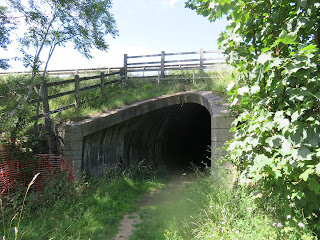In 2001 and 2002 I was asked to perform ecological surveys of Area 5 to support the Highways England’s Biodiversity Action Plan: that is, the M25 and its ‘stubs and tails’ (associated trunk roads or feeder routes).
During 2001 I surveyed 60% of Area 5 including bridges over water for bats (one was filmed for BBC) Inside Out programme). In 2002 I surveyed the remaining 40%
The scope of the surveys was to identify bird communities as well as interesting habitats on the network. I also undertook 10 bat surveys of bridges over water, including the rivers Mole, Colne, Darent, Ash, and Wey.
The survey focused on Highways Agency (HA) target habitats and species and those considered to be of conservation concern. The HA target habitats were boundary features, grassland, heathland water and woodland.
The western side of the M25 – Surrey to Bucks - is a watery landscape, with good quality grassland and from the M3 to the M1 there are some interesting architectural structures
The western arc had the greatest number of bird species recorded on the ‘network’ including songbirds. Many of these were located along the A3 and M3 and included whitethroats and sedge warblers. M3 sightings included terns and a swan was found on the verge, sometimes they landed on the carriageway thinking shimmering tarmac was water.
A dead song thrush with a leg-ring was found on the (M3 2.7.2002) having been ringed at Thorpe Green as a nestling (18.5.2002) 6km away. The M3 was very much quieter in those days.
The Alderbourne was colonised by water voles that hadn’t read the text books about their habitat requirements and how they create water vole lawns. It was very overgrown and dark due to the alder trees.
Harvest mice were recorded on the embankment near J16. The characteristically steep verges held interest for small mammals near farmland and of course kestrels were common between J10-17, indicating the presence of small mammals in the large verges.
Every Friday I scheduled myself to the north so that as soon as I had finished work I could drive to see my Dad in hospital. There was extensive farm and grassland habitats in the northern section.
A problem on the A1 ‘tail’ was in the deer numbers, as the birch scrub used to grow almost to the ‘swathe’ cut and give the deer cover –they could be seen browsing - right up to the hard shoulder.
The first mammal tunnel or ‘cerviduct’ in this country was constructed on the M25. This is near Bell Common where Epping Forest was bisected by the road. There are footpaths - one from Copt Hall - converging at the duct onto the forest.
Southern section of the M25 runs for 50 miles through Kent and Surrey and is surrounded by woodland especially at Reigate and near the A23 Large clans of badgers in some of the M25 woodlands and on the M26 Plants characteristic of both acid and chalk conditions.
There are two Special Areas of Conservation SAC’s (designated under Article 3 of the Habitats Directive: Mole Gap to Reigate Escarpment and Wisley and Ockham Commons.
The south was characterised as farmland and woodland; offsite landowners releasing pheasants, resulted in a noticeable amount of roadkill in the Autumn. This would have been rich pickings for carrion feeders, although red kites were rare then. Buzzards were only recorded between Junctions 8-9 (2002) and of course are now far more widespread.
Birds associated with grassland: Starlings are associated with short grassland and are prone to feeding on invertebrates located at the verge after the ‘swathe cut’ -the first 1m of the verge- kept short for sightlines.
Green woodpeckers were found on grassland verges where there were ant mounds, usually where the original habitat had been, such as on trunk roads (A3 or the M25 at Downside). A nesting meadow pipit was located on a ridge of chalk grassland on the M20.
Linnets and goldfinches featured around the Mole valley and Bookham Common (breeding behind the ‘noise’ fence) and were seen flying across the carriageway.
At the Leatherhead junction, is located the Quinnel’s family home –known as ‘The Forge’ - and the oldest in Surrey dating back to the 13 century.
The M25 cut their garden in half. Initially the noise was bad, but the Quinnels grew a woodland barrier now known as ‘Teasel Wood’.
We have more recently undertaken harp trapping of bats (photo above) in the wood and the Surrey Bat Group have found the rare Bechstein’s bat (a species named on the Mole Gap SAC).
Former 1930’s Shepperton semi belonging to J.G. Ballard (above) near the M3 (below) author of ‘Concrete Island’: introduced a new way of thinking about roads and how we respond to bridges, flyovers and the secret world of repair crews
References
Alison Fure 2002 Avian Use of the M25 Soft Estate
David Ivison ‘Life in the Fast Lane’.
Helen Macdonald writer and naturalist BBC
Graham Worsley 2011 M25’s 25th anniversary YouTube video https://youtu.be/vgwCd4Rk0G8
Design Manual for roads and bridges on the Highway’s England. https://www.standardsforhighways.co.uk/dmrb/search?discipline=SUSTAINABILITY_AND_ENVIRONMENT





Comments
Post a Comment